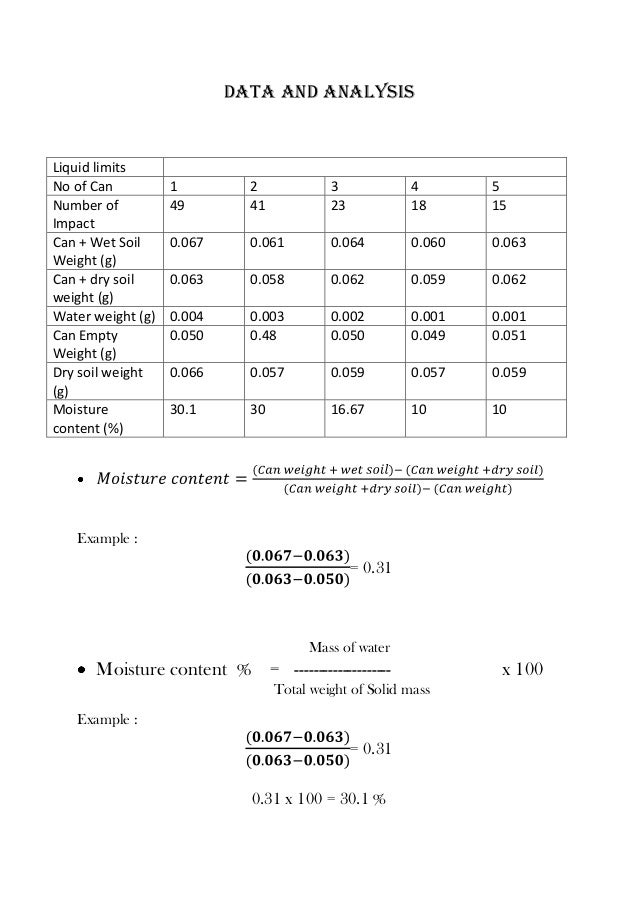INTRODUCTION
The plastic limit is one of 5 limits developed by A. Atterberg, a swedish scientist. The plastic limit is one of the most commonly performed of the Atterberg Limits along with the Liquid Limit. These 2 tests are used internationally to classify soil
The plastic limit is defined as the moisture content at which soil begins to behave as a plastic material. A plastic material can be molded into a shape and the material will retain that shape. If the moisture content is below the plastic limit, it is considered to behave as a solid, or a nonplastic material. As the moisture content increases past the plastic limit, the liquid limit will be approached. The liquid limit is defined as the moisture content at which the soil behaves like a liquid.
EQUIPMENT
Soil sample
Mixing dish
425 micron Sieve and pan
Spatula
Glass plate
Water
PROCEDURE
1. Obtain equipment outlined above for the Plastic Limit test.
2. Weigh 3 metal moisture content containers and record the weights.
Keep track of the containers and their weights.

3. Using the soil provided or your own sample of dry material, pulverize about a handful of it using the small soil pulverizer. The pulverizer breaks the material up into particle sizes that will pass the 425micron sieve in accordance with the ASTM standard for this test. Any material not passing through the pulverizer can be discarded.
4. Put the soil into the mixing bowl and add enough water so that the sample can be easily molded into a ball.
5. Obtain a ball about the same diameter as a nickel and place the ball
on the glass plate. Roll the ball into a thread of approximately 1/8 inch diameter.

6. If the thread crumbles before 1/8 inch diameter is reached, the sample is too dry and water must be added. If the thread is easily rolled to 1/8 and even smaller, the sample is too wet and must be dried by working the soil with the hands.
7. When the sample just begins to crumble at 1/8 inch diameter,
this is the plastic limit.

8. Immediately placed the thread of soil into a cup and obtain
a wet weight of soil. Place the soil in the oven and obtain the moisture
content at the next lab meeting.

9. Repeat test once more to obtain an average of 2 tests.
TEST REPORT








